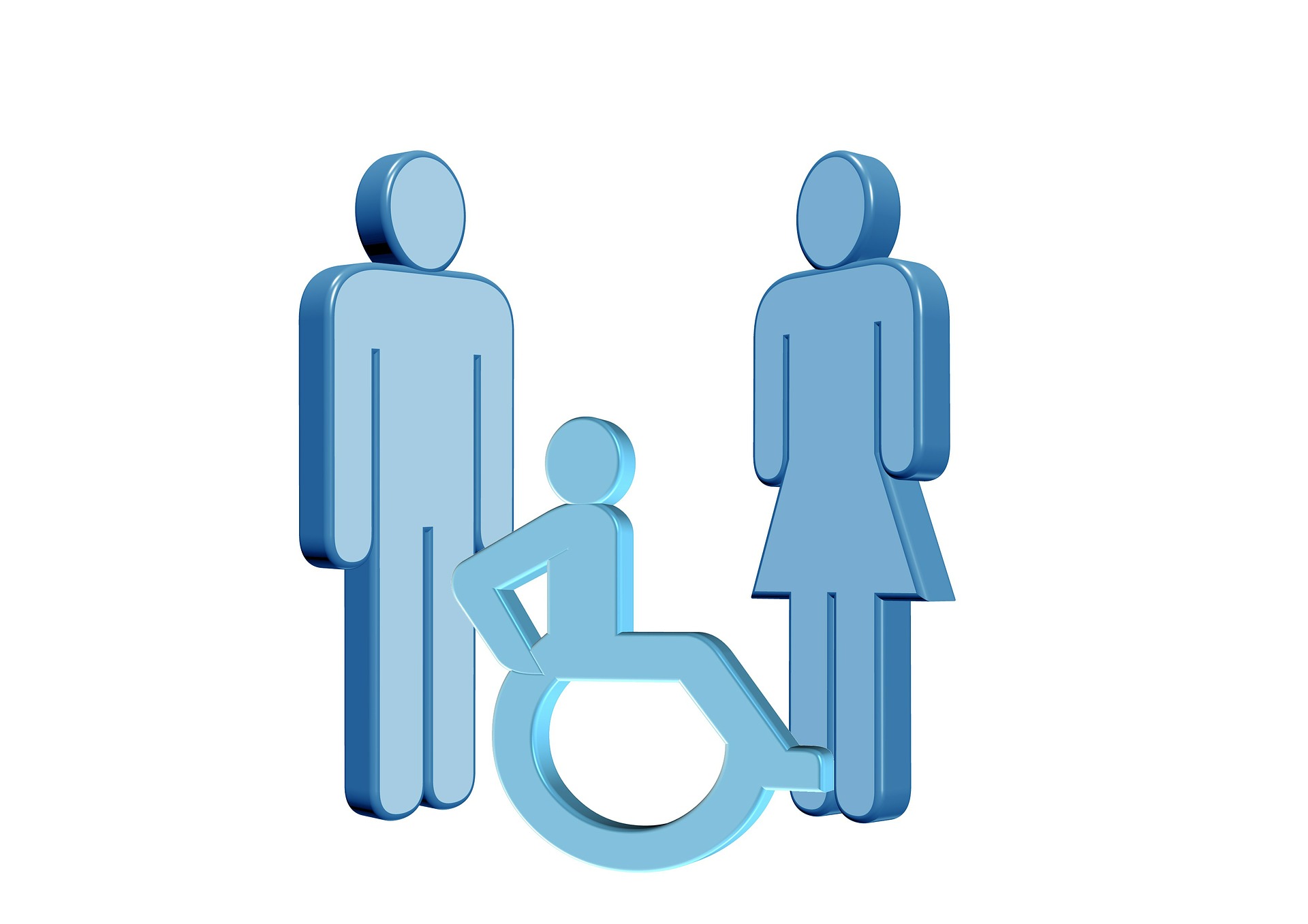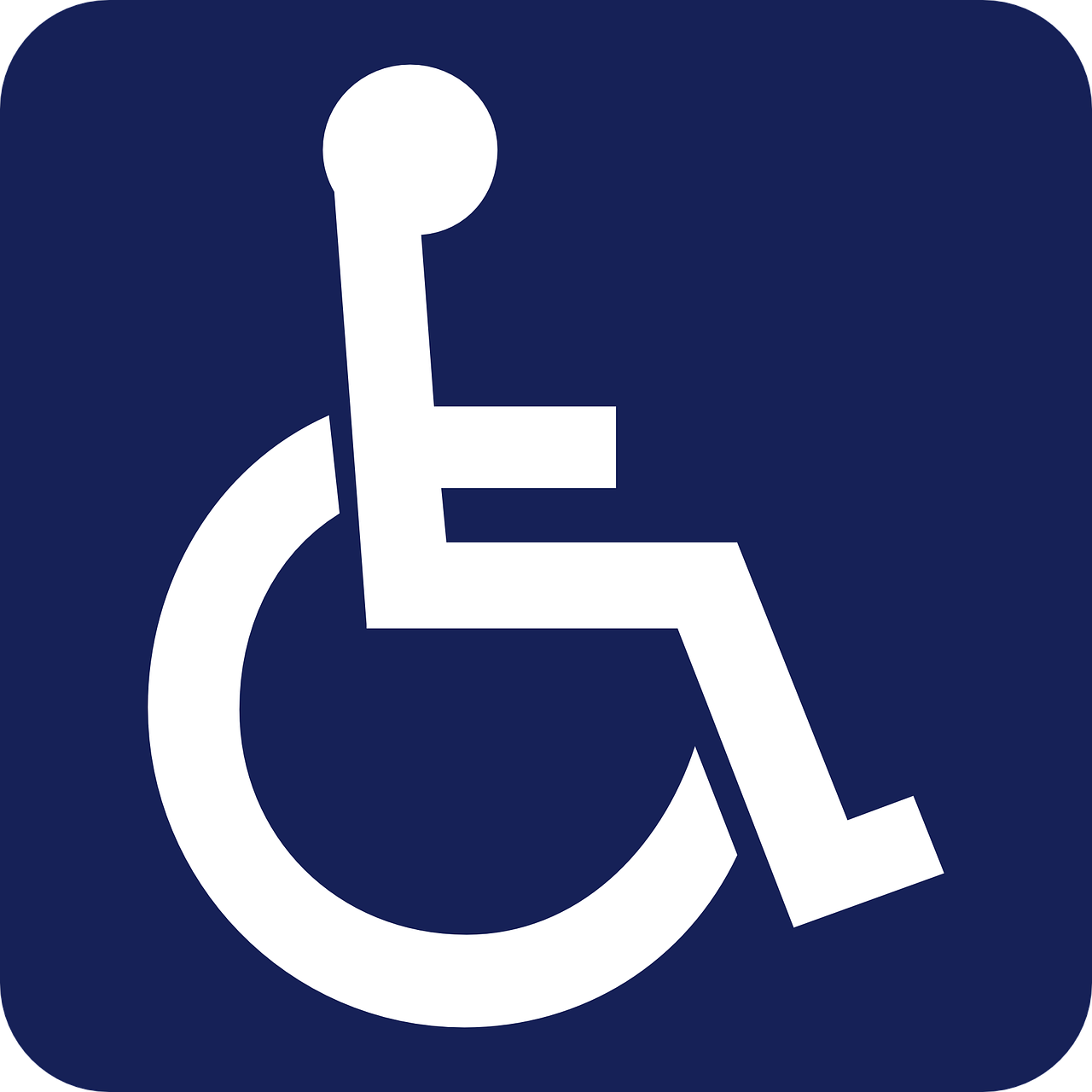
What is the ADA?
The Americans with Disabilities Act is a federal law in place that prohibits discrimination against people with disabilities. It is a comprehensive law with very specific details on how to accomplish accessibility and inclusivity in the public sector. The Disabilities Act has two main areas of focus, and government workers and agencies are included. These areas are equal employment opportunities and accessibility to businesses for all.
What is Accessibility?

Accessibility applies to every physical business that offers services or goods to the public. In addition, although not yet written into the law, websites for businesses without a physical business location should have accessible design features or options when interacting with the website.
For this article, we're going to focus on the physical locations of businesses, and the changes in design necessary that specifically relate to ADA signage.
What is ADA Signage?
ADA signage is required in certain specific spaces and to identify certain rooms or spaces within your business. ADA compliant signage regulations may include: Braille dots, visual characters, raised characters (also called tactile characters), and/or pictograms, depending on the area or room the sign is identifying.
TIP: It's important to pay attention to the details, so use a sign maker who specializes in ADA-compliant signage, like ADA Central.
Universal Accessibility

In order to be considered ADA compliant signs, they must be very specific in design, and they must be posted at certain heights and specific places. The reason for this is to achieve a universal standard of accessible design so that people with disabilities know where to find what they need in any public accommodation, no matter where they are.
Where Are ADA Signs Required?
Besides the obvious locations such as restrooms, elevators, exits, and emergency exits, ADA signs are used as an identification sign for any permanent room, space, or feature, and for directional purposes. If the area in question changes often, such as a conference room or classroom, these do not require ADA signage. ADA sign requirements vary as to what lettering and specifications are needed for which signs, but you can find all details here.

Different Types of ADA Signs
ADA compliant signs are required for two categories: 1, to identify a permanent room, space, or feature - and 2, to provide direction to, or information about, a permanent room, space, or feature. Visual characters are not the same as raised characters or Braille; these are tactile characters. Each ADA sign background should have a non-glare finish. A non-glare finish makes reading easier for low-vision individuals.
The Basics
The ADA standards require most visual signs to have raised characters, but not all signs are required to. The individual characters on visual only ADA compliant signs must be either dark characters on a light background or light characters on a dark background, resulting in high contrast. In addition, signs must be in a sans serif font. This is because sans serif is believed to be the easiest font style to read. There are character height and character spacing requirements, as well.
Tactile Signs - Raised Characters, Braille Dots

ADA compliant signs are tactile signs, meaning they're required to contain tactile characters. Tactile characters are the same as raised characters, meaning the letters can be read by touch if a person is blind or has low vision, but can't read Braille dots. Many visual signs have to also include tactile characters, which could be raised letters, contracted grade II Braille or both.
A Braille sign is also considered a tactile sign because Braille dots are also read by touch. In addition, when Braille is required, it should be underneath the last line of text and on completely separate lines.
Pictograms
Additionally, certain signs require the use of a pictogram, typically the ISA (International Symbol for Accessibility), in order to make the ADA sign compliant. It is acceptable to use more than one sign when it is easier to do so, such as adding a pictogram sign and leaving existing signage. Sometimes, using another type of pictogram that is universally understood is acceptable. Example: pictogram for stairs. (See picture below.)
Directional or Informational Signs
Most all directional or Informational signs only have basic visual requirements, which is to say the minimum ADA regulations apply, as stated under "the basics", above. You can use simple arrows when applicable.
Height Requirements
The tactile characters on an ADA compliant sign should be hung so the bottom of the lowest tactile character or line of text measures 48" (inches) from the finished floor, and the base of the highest tactile character is no more than 60" (inches) from the floor.
TIP: It is recommended that each facility should decide what measurement works best for them and hang all wall-mounted signs at the same height. 54" (inches) to the bottom of the sign is another good "rule of thumb" as to height for all ADA compliant signs.
No Room?
If there is not enough wall space to mount the sign on the wall next to the door on its latch side, mount to the nearest adjacent wall to the door latch. Braille signs in this case must be hung in the center of the first 18" X 18" square section clear of the door swing arc. This means outside the clear floor space of outward swinging doors.
HINT: Double doors that have only one active leaf are permitted to hang the ADA sign on the inactive side, using ADA guidelines for height requirements above.

Overhead signs, such as the one pictured above, can be used for the visual requirement, as it is common for businesses to have existing overhead signage in place already (especially for exits and emergency exits). For ADA sign stipulations, overhead signs and pictograms must have corresponding text (tactile) including raised characters and Braille per mounting instructions above.
In addition, signs must be hung at least 80" (inches) from the floor to the bottom of the ADA compliant sign, and if mounted cannot protrude more than 4" (inches) from the wall, and at least 27" (inches) above the floor. ADA signage regulations state they cannot block emergency equipment.
Additional Important Information
Temporary signs do not have to be ADA compliant. Elevator signs have many detailed regulations so check the link below for official instructions. Hopefully, in the near future, we will be able to provide an inclusive and accessible environment for everyone.

ADA Central - We Specialize in ADA and Wayfinding Signage
It is important to check the ADA 2010 Standards for Accessible Design when mounting signs and for more detailed instructions. You can also always contact ADA Central for any questions you have regarding ADA signage. We are the authority on ADA signs and would be happy to assist you in your ADA compliance needs.
Like what you read? Read our article on ADA Small Business Compliance


